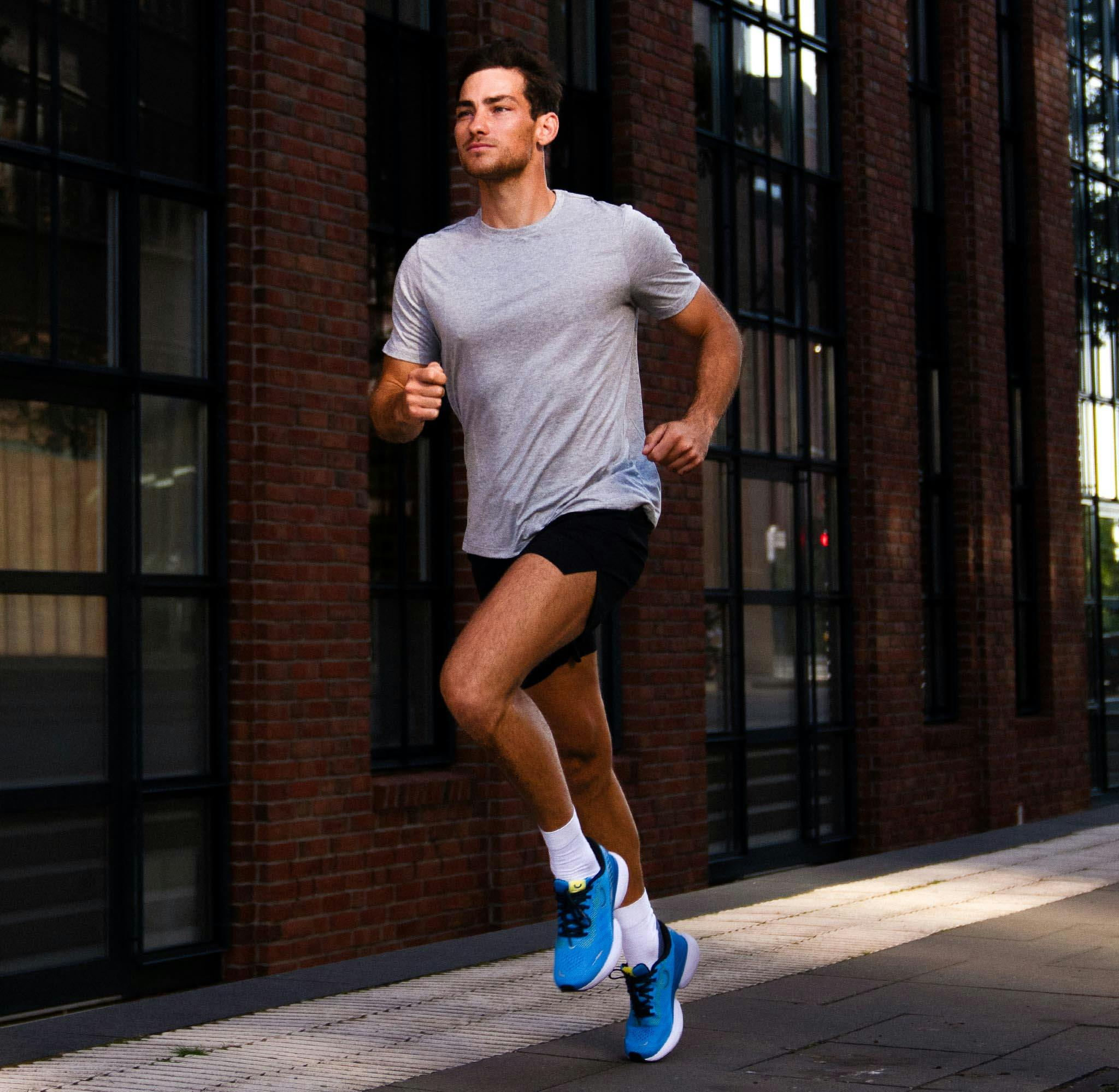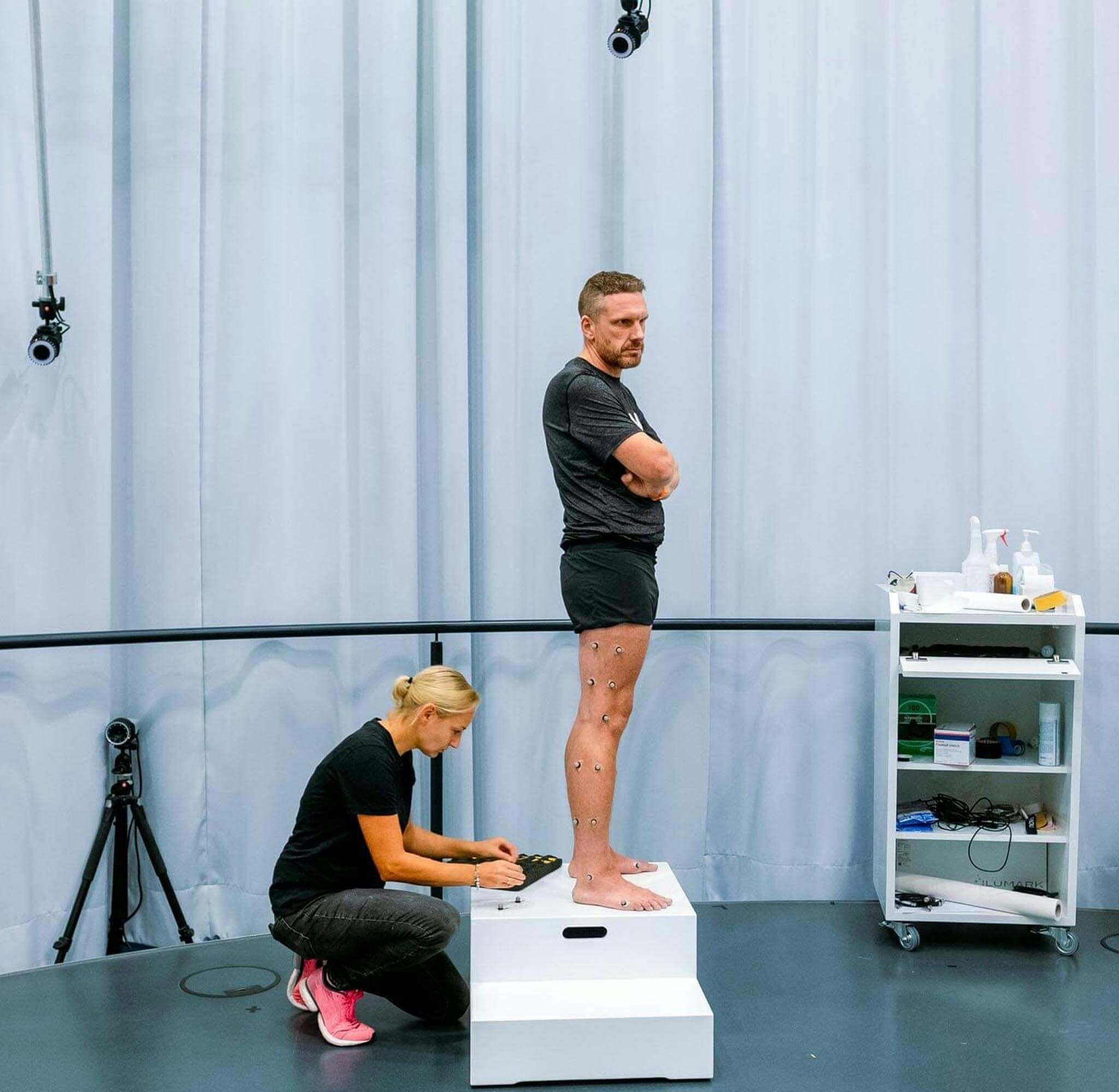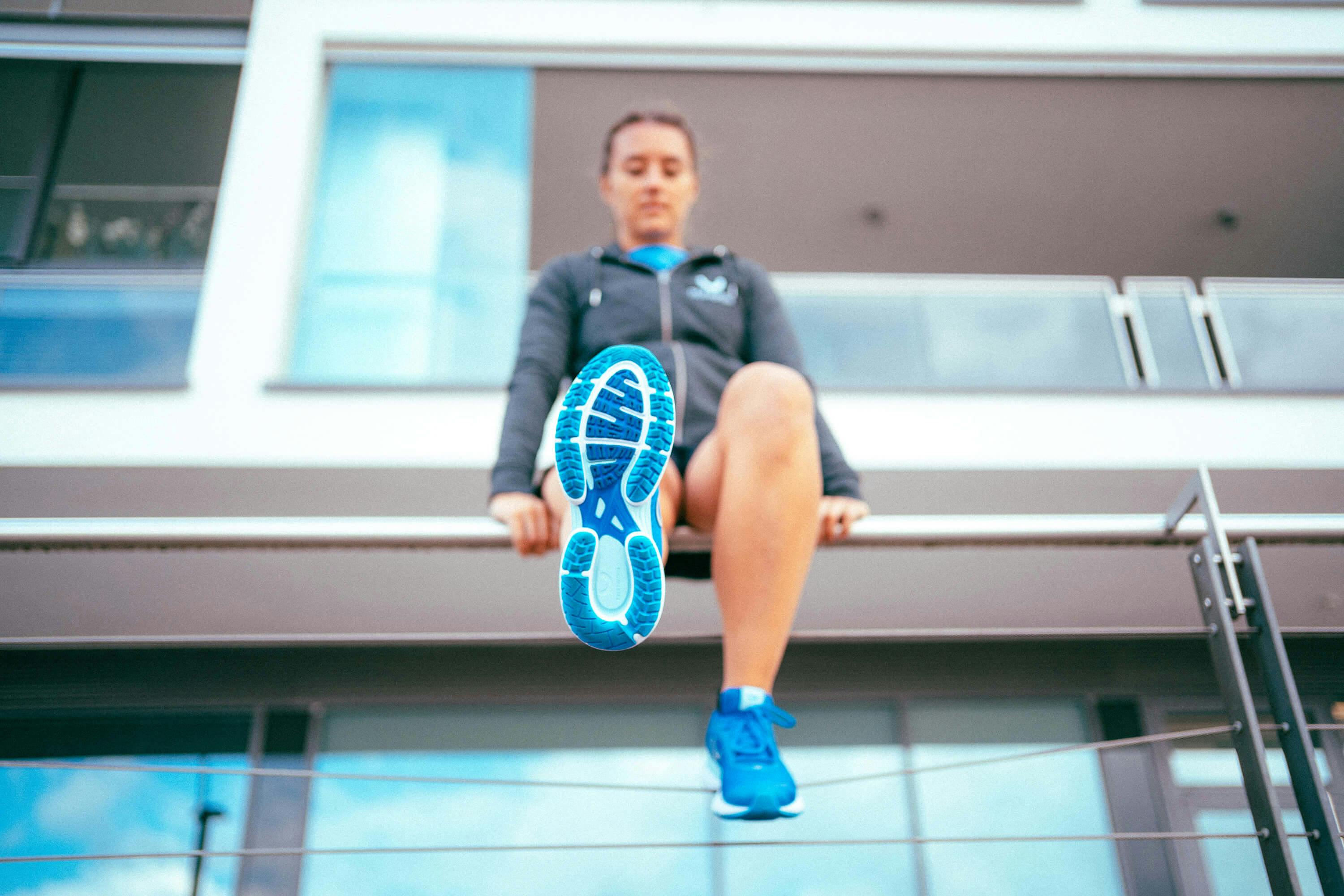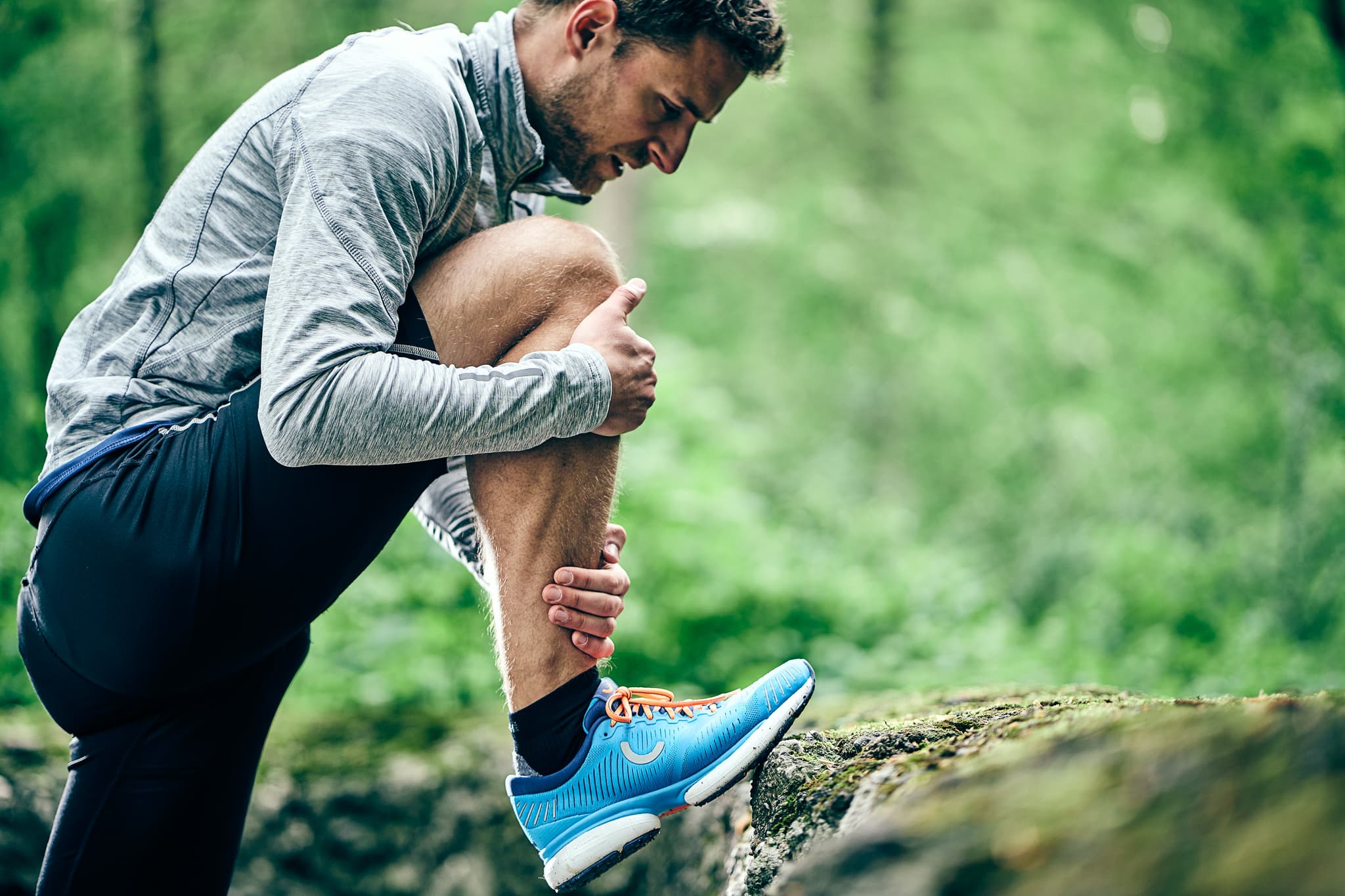
Shin Splint Syndrome: When Shin Splints Slow Us Down While Running
17th September 2021
Time and again, athletes complain of stabbing shin splints while running. The so-called shin splint syndrome – better known in the running world as shin splints or medial tibial stress syndrome – is a runner’s nightmare. No wonder, after all, shin splints sting so badly that we can barely walk. This results in an unwanted break from running. To prevent the pain from occurring in the first place, it is important for runners to know the symptoms and causes. We talked to Prof. Dr. Gert-Peter Brüggemann and Dr. Andree Ellermann about what the biomechanics of our body have to do with shin splint syndrome, when the symptoms occur, and what runners need to know about therapy.
Content:
What are the causes of shin splints?
Treatment: this is how doctors diagnose shin splint syndrome
No shin pain while running: here’s how we can prevent tibial stress syndrome
It appears as if out of nowhere – the stabbing shin pain when running. The discomfort is not always so severe that those affected must stop their run. Sometimes the pain subsides as quickly as it came. In most cases, however, it torments the runners. And then they want nothing more than to end their training unit as quickly as possible.
Sometimes runners don’t feel the twinge in their shins if they don’t strain their legs. This tempts many to suppress their discomfort and continue to train as usual. Not surprising. After all, who wants to voluntarily take a break from running when it doesn’t seem necessary? But this is a major mistake – and can lead to an even longer enforced break.
One of the typical symptoms of tibial tendon syndrome (from the Latin tibia, the tibial bone) or medial tibial stress syndrome (MTSS) is the described stabbing pain during exercise, which disappears as if by itself during periods of rest. If those affected ignore this and continue to exercise, the pain intensifies. Much worse, ignoring it even causes the pain to remain after the running session. The shin area then reacts sensitively even during rest phases, usually even under slight pressure. If the syndrome progresses further, they feel irregularities and swelling in the lower third of the inner side of the shin.
Which structural trigger is actually behind these symptoms has not been clearly proven. That is why physicians speak of a syndrome. Nowadays, sports physicians suspect irritation or inflammation of the periosteum, fasciopathies or a reduced bone mineral density and bone repair function due to overloads.
What are the causes of shin splints?
Findings in sports medicine suggest that the most common reason for shin splint syndrome is classic overuse. And this happens faster than some runners think.
If they suddenly increase their training volume, running speed and intensity, or abruptly change the surface, this often ends in overloads. But muscular imbalances, a malposition of the foot, and incorrect or worn-down running shoes can also trigger shin splint syndrome.
Gert-Peter Brüggemann, professor of biomechanics and co-founder of True Motion, explains that in the end it is precisely this overloading of the anterior tibialis muscle that triggers the pain because this muscle is located in the painful area in the lower third of the shin. Now, this very tibialis anterior is responsible for lifting the forefoot. When we run downhill, we put extra strain on this muscle. We then risk shin splint syndrome.
DISCOVER RUNNING SHOES
FROM TRUE MOTION
Dr. Andree Ellermann, orthopedist and head physician at the ARCUS Sports Clinic in Pforzheim, Germany, also emphasizes that runners should avoid overloading the shin muscle. In the end, he says, there are many triggers for these overloads – and thus multiple causes of shin splints. Especially athletes who incorporate frequent rotational and stop-and-go movements into their training are in danger of developing shin splint syndrome.
"The so-called shin splints – also known as medial tibial stress syndrome (MTSS) – is the nightmare for runners."
In addition, malpositions of the body can lead to overloads. Bowlegs and knock knees in particular, but also a chronic instability in the ankle joint are the most common causes here. Such ankle instabilities usually occur when those affected have previously injured their inner or outer ligaments.
Beginning runners can be affected by shin splint syndrome. Often, the reason lies in overly spaced-out steps when running. To avoid overusing the tibialis anterior muscle, it can help to take shorter strides. “The foot should touch down flat right under the body’s center of gravity – that’s the middle of the pelvis,” explains running shoe developer Andre Kriwet.
Treatment: this is how doctors diagnose shin splint syndrome
Even if we as passionate runners don’t like to hear it, anyone suffering from shin splints should stop running for the time being. Because that is the first step in therapy. However, there is also good news: patients can keep fit in other ways. Swimming is particularly suitable here. Patients can train their stamina and at the same time protect the shin bone. If there is no swimming pool, lake or the sea nearby, patients can go for bike rides – provided they can pedal without pain.
If the shin pain persists despite the running break, patients ask their doctor about possible treatment. The problem: although there are many approaches to treating tibial tendon syndrome – the effectiveness of the various treatment methods has not yet been scientifically proven. This is true for heat-cold treatments (so-called alternating baths) as well as for shock wave therapies, for electric or ultrasound treatments and for physiotherapy.
This is another reason why orthopedist Ellermann advises finding out the cause of the shin splints so that they can then be corrected. To do this, “orthopedists analyze the bony structures, the so-called anatomical-functional analysis,” explains Dr. Ellermann. “In addition, sports scientists can perform a gait analysis.”
The other advantage is that medical professionals can use imaging techniques such as X-ray, ultrasound, or MRI to rule out the possibility that other, more serious injuries are triggering the stabbing pain in the shin. These include a stress fracture of the tibia or a compartment syndrome. If these are not the causes of shin splint pain while running, the diagnosis is usually shin splint syndrome.
How long should we take a break with shin splints?
If it really is shin splint syndrome, most runners are just waiting to finally lace up their running shoes again. When is the right time for this, however, varies greatly from individual to individual.
Only when we no longer feel pressure pain in the shin and can withstand light exertion without the typical symptoms, we can return to the running track. It is then important that we do not directly overdo it after our shin splint syndrome has healed. Instead, we should only slowly increase the training intensity. This is important. Because otherwise the shin pain may come back quickly. And then the healing can take up to twelve months in the worst case.
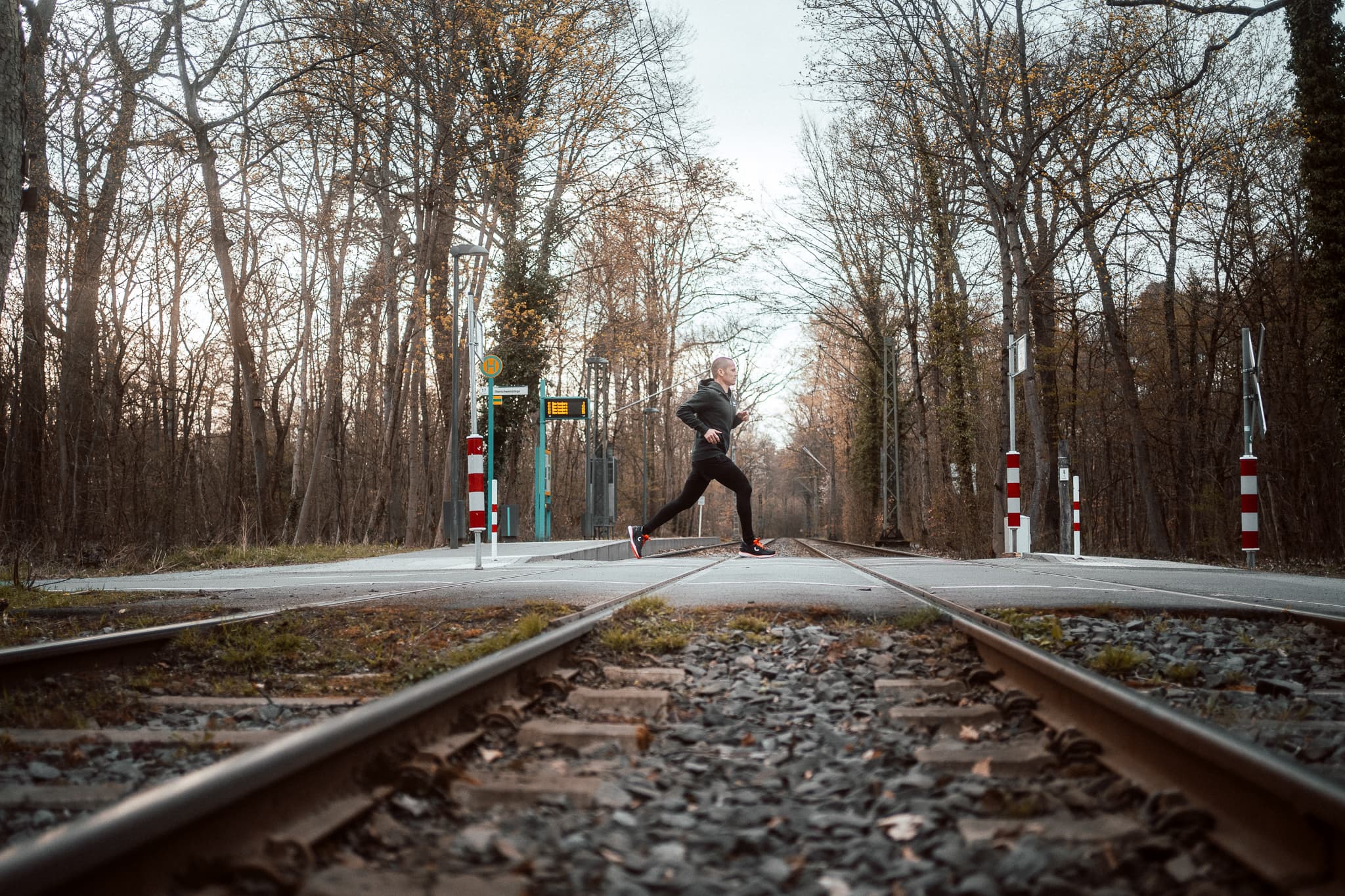
No shin pain while running: here’s how we can prevent tibial stress syndrome
How athletes can prevent shin pain while running – science has been discussing this for years. As a result, we keep reading about a wide variety of even better preventive measures. These are said to include, for example, shock-absorbing insoles and heel pads, stretching of the Achilles tendon and specially staged running programs. However, it has not yet been scientifically proven that any of these measures help.
But biomechanist Brüggemann and orthopedist Ellermann agree that running shoes in particular play an important role in the development of tibial stress syndrome. Running shoes should therefore support the natural cushioning properties of the foot – and not prevent the foot from tilting inward by using rigid pronation wedges. Because this is precisely where the symptoms can be caused.
The technology of True Motion running shoes is also based on this knowledge. They are designed to keep leverage forces as low as possible. As a result, runners use more than 50% less of their foot lever muscles – the anterior shin muscle that is so often overworked.
But running shoe technology isn’t everything. There are a few simple tips beyond that, too, that can reduce the risk of shin splints:
Stretch your ischiocrural and calf muscles: Researchers S. Yagi, T. Muneta, and I. Sekiya have found that there is a correlation between posterior thigh muscle flexibility and the incidence of shin splints. So be sure to incorporate regular stretching sessions into your training. For example, to stretch your hamstring, you can place one leg extended on a chair and then bend forward over the leg with your back as straight as possible.
Avoid unexpectedly increasing the scope or intensity of your training: Increase the load on your running slowly and gradually. The experience of many professionals shows that this will help you reach your goal faster, despite slower increases. A good alternative to purely regenerative rest days is to look for a compensatory sport. This could be swimming, cycling, weight training, or yoga, for example. However, any other sport that puts less strain on the legs is also ideal.
Choose a softer surface for your workout: A hard surface when exercising stresses your body. For example, if you run on concrete or asphalt, your bones, muscles, tendons, and joints have to absorb a lot of force. As a result, training on these surfaces tires your muscles more quickly – and leads to overuse injuries such as shin splints.
Softer surfaces – such as grass, forest floor, or a tartan track – take over part of the shock absorption due to their spring effect, so that you put less strain on the aforementioned parts of your body. Various smartphone apps can display the ground conditions of your planned running route in advance – and help you optimize your training routes.
Train your arch: The arch is an important structure of your body. Its structure helps to absorb shocks during running. By doing special exercises you can strengthen the muscles of your arch and prevent shin splints. Sit on a chair and put a towel on the floor. Now try to pull it closer to your foot just by moving your toes.
Strengthen your hip muscles: Well-developed hip muscles help your body absorb the shock of each step. In addition, in a study of 230 participants, scientists showed that too much internal rotation of the hip increases the risk of tibial stress syndrome.
Invest in really good running shoes: Which shoes are really good depends on your individual preferences. That’s why a detailed consultation at the running store usually helps you find the right shoe for you personally. “Just slip them on, feel comfortable and at ease, and don’t feel any pressure points when walking – that’s usually better than any foot scan,” says biomechanics professor Gert-Peter Brüggemann.
True Motion running shoes can also help prevent shin splint syndrome with their innovative U-TECH™ technology. The U-TECH™ foam, a U-shaped element in the rear of the sole, ensures that the knee remains centered and thus aligned over the foot while running. This way, U-TECH™ technology can counteract harmful loads.
Body weight plays a role in shin splints: It sounds logical that the weight of athletes can also increase the risk of shin splints. After all, it has a significant influence on the forces that act on the shins with every step. A three-year study was able to prove that the higher the BMI, the greater the risk of shin splints.
However, a limited supply of nutrients to the body can also promote shin splint syndrome. This happens especially when we are on a calorie-restricted diet.
The results show that even simple tips can help prevent shin splint syndrome. However, if the shin already stings and pinches, the only thing that helps is a break from running. As already mentioned, however, this is not the same as taking a break from sports. If patients keep fit with sports such as swimming or cycling and then slowly start running again with the right footwear, they often come back even stronger from their injury break. In the end, it is crucial to find the appropriate load.

NEVER RUN OUT OF
NEWS
Discover all True Motion stories – and be the first to hear about new products, promotions and events. Simply, center your run!

NEVER RUN OUT OF
NEWS
Discover all True Motion stories – and be the first to hear about new products, promotions and events. Simply, center your run!
READ THE NEWEST
U-RUN STORIES
Sabrina Mockenhaupt: This shoe got me running again
2025-10-31

Sabrina Mockenhaupt has achieved everything that many runners dream of. Running was and is her life, until the pain eventually became too much. Today, she is running pain-free again – this is her story.
Laura Schmidt: I have rediscovered running for myself
2025-03-07
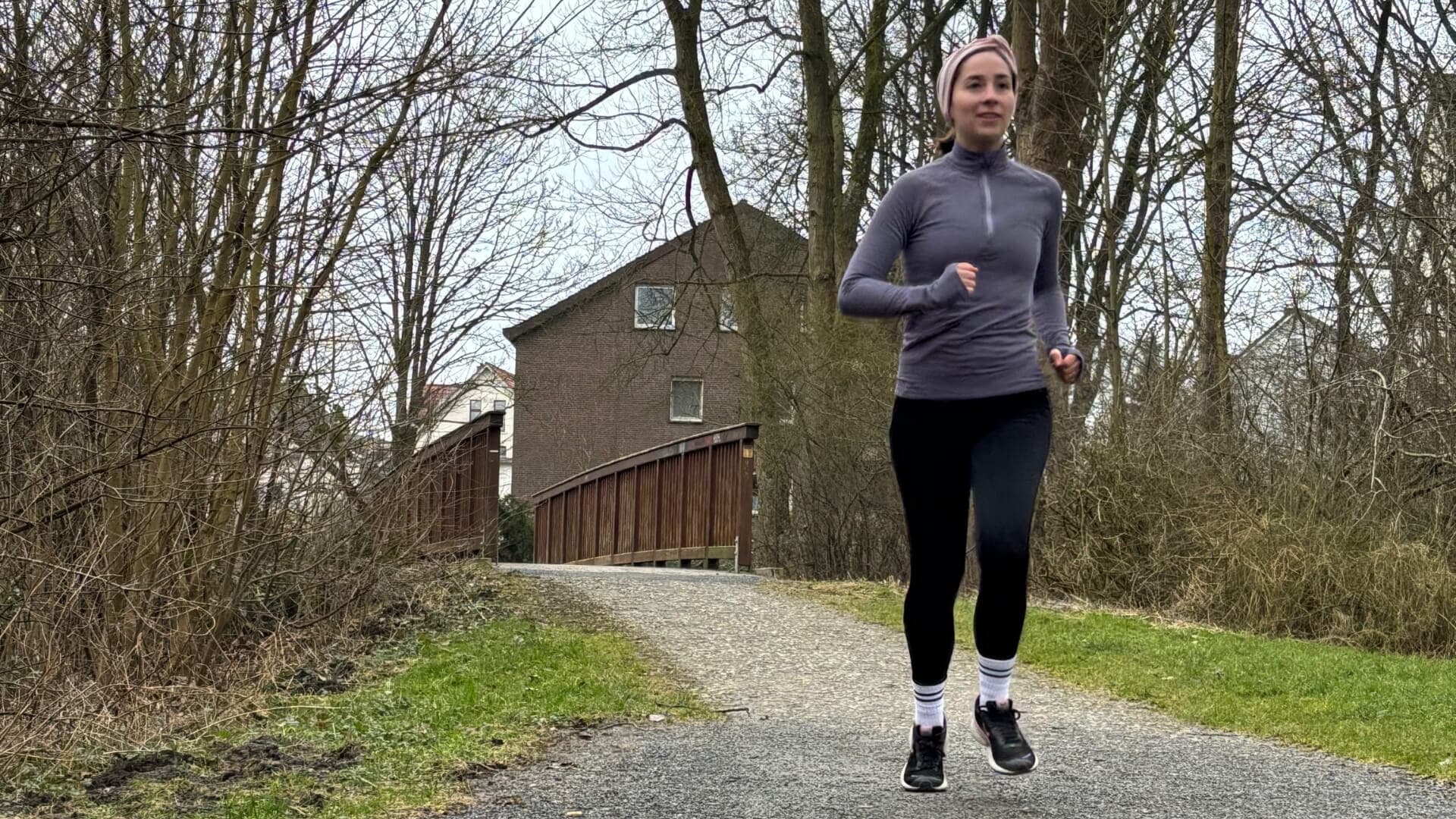
My name is Laura. I started running eight years ago – to clear my head after work. But knee pain kept me from being able to run regularly. A new pair of running shoes was finally the solution. Today I run pain-free. This is my true runner story.
READ THE NEWEST
U-RUN STORIES
Sabrina Mockenhaupt: This shoe got me running again
2025-10-31

Sabrina Mockenhaupt has achieved everything that many runners dream of. Running was and is her life, until the pain eventually became too much. Today, she is running pain-free again – this is her story.
Laura Schmidt: I have rediscovered running for myself
2025-03-07

My name is Laura. I started running eight years ago – to clear my head after work. But knee pain kept me from being able to run regularly. A new pair of running shoes was finally the solution. Today I run pain-free. This is my true runner story.
RECOMMENDED BY








RECOMMENDED BY








GET 10 % OFF YOUR FIRST ORDER!
Get your personal running updates with exclusive discounts, product news, training plans and tips for healthy running - straight to your inbox. 10% discount on your next order.
SERVICE
ABOUT US
© 2025 True Motion Running GmbH


